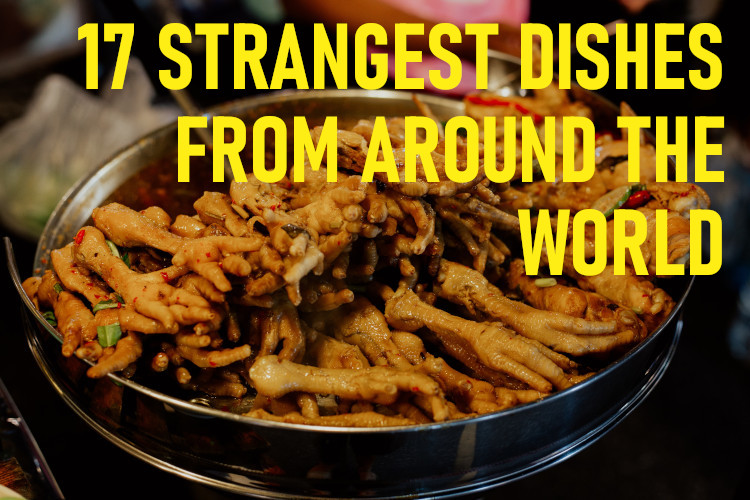
Food, glorious food! It’s one of the reasons we travel, and one of the best ways to become immersed in the local culture on a trip abroad.
In destinations like Italy, France, Thailand and Mexico, to name but a few, a big part of the whole travel experience is intimately tied up in tasting their world-renowned cuisines. However, around the globe there are some strange, weird and wacky dishes that – although considered perfectly good food or delectable delicacies by locals – will make the average Western traveller squirm.
Many of these dishes are not only considered normal meals in their home country, but some are also a prized part of the local culture. Therefore we won’t label any of these as “gross”, but rather as a cultural experience worth adding to your travel bucketlist, if you dare…
For this list we have excluded foods with ethical concerns or that are notorious for their cruelty towards animals. We have also omitted well-known foods like frogs’ legs.
Without further ado, here are 17 of the strangest foods worth giving a try on your travels around the globe – if you can get your hands on it.
Warning: some of the images in this post may upset sensitive readers.
1. Casu Marzu – Sardinia, Italy
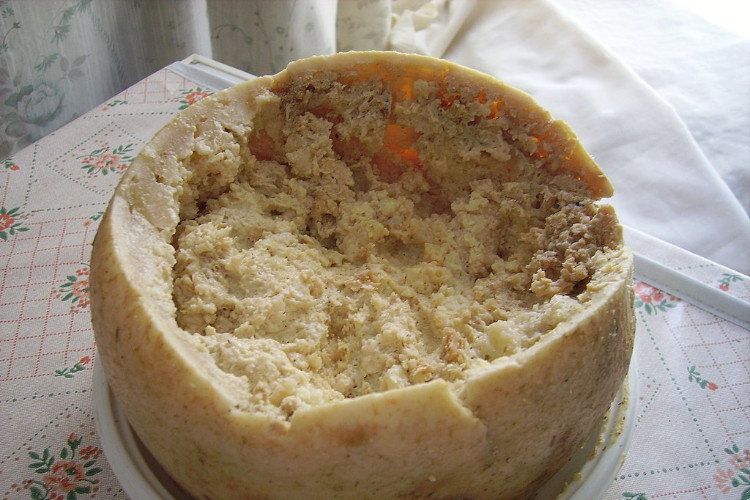
Let’s get one of the more famous strange foods out of the way first.
Often hailed as “the most dangerous cheese in the world”, casu marzu, which literally translates to “rotten cheese”, is a cherished dish on the breathtaking Italian island of Sardinia. So what is casu marzu?
Basically the Addams Family version of the delectable pecorino, this cheese starts off with a base of sheep’s milk; but instead of letting it ferment and cure the traditional way, cheesemakers introduce cheese skippers – the larvae of the Piophila casei cheese fly – to digest and break down the cheese’s fats. This results in a very soft and supposedly delectable cheese, filled with maggots.
Reportedly, once the maggots have died, the cheese is no longer safe for consumption; so traditionally they are eaten simultaneously. This has led to local and European bans due to health concerns, since these larvae may survive stomach acid and embed themselves in the lining of the intestines, to feed off of their host like a parasite.
Variations of this cheese can also be found in other Italian regions and on the French island of Corsica. There have also been recent attempts to find safer ways to produce casu marzu, in order to resume legal commercialisation.
2. Locusts – Israel and numerous parts of the globe
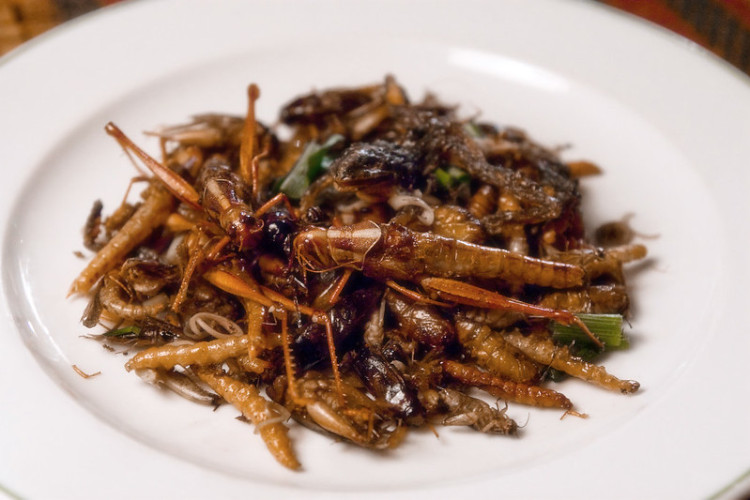
This might come as a surprise to those of us used to hamburgers and pizza, but it’s actually not that uncommon around the world to eat insects. In poorer communities, they can be a much-needed source of protein and, if prepared correctly, could actually be quite tasty. Sometimes, especially after destroying local crops in the form of a plague, they could also be the only alternative left to eat for sustenance.
Surprisingly, locusts are the only insects that are both kosher and halal. It should then come as no surprise that they are commonly consumed in several cultures across the Middle East, Africa and Asia. In other parts of the world, like Mexico, they can also be bought as a street food, covered in chocolate.
In Israel, though, locusts have been given elevated status as haute cuisine thanks to the efforts of Chef Moshe Basson, owner of the famous Eucalyptus restaurant in Jerusalem. His fried locusts, often prepared with chickpea flower, chili, garlic and salt, have become a sought after delicacy. Not only do they apparently taste like a crunchy cross between prawns and sunflower seeds; they are also highly nutritious, being high in iron, zinc and proteins.
This is definitely one to give a try if you get the chance!
3. Hákarl – Iceland
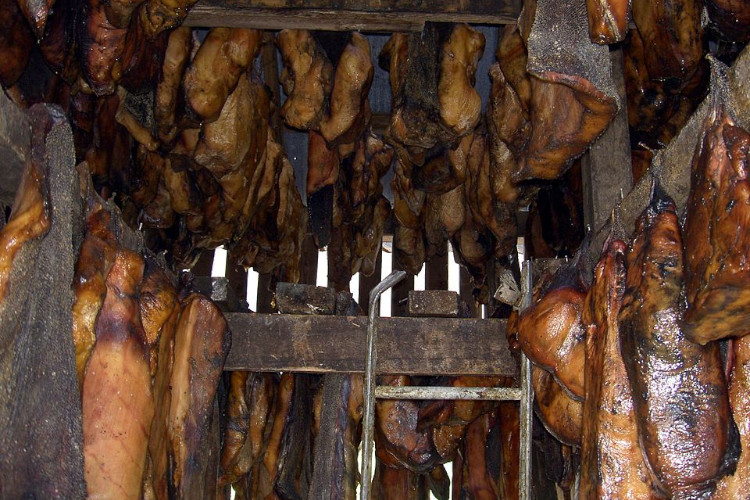
A national dish of Iceland, hákarl is literally Greenland shark meat that has undergone some extensive preparation. The reason: these sharks are actually poisonous due to extremely high levels of urea and trimethylamine oxide found in their flesh; so to make it safe for human consumption, the shark meat is fermented and dry cured for several months.
Nowadays there are modern methods to correctly prepare hákarl, but traditionally fishermen would rest the cleaned and gutted shark on a small mound, after which they would cover them with sand, gravel and stones for several weeks to press out the toxins and reach the required level of fermentation. It would then be cut into smaller chunks and hung to dry for a few months before it was ready to be served in bite sized portions.
Hákarl can be readily bought in stores across Iceland and comes in two varieties – soft, white meat from the shark’s body; and chewy, reddish meat from its belly. First timers are normally advised to pinch their noses to get past the strong urine smell, which would otherwise dominate the subtle taste that some people liken to a combination of fish and blue cheese.
4. Tuna eyeballs – Japan
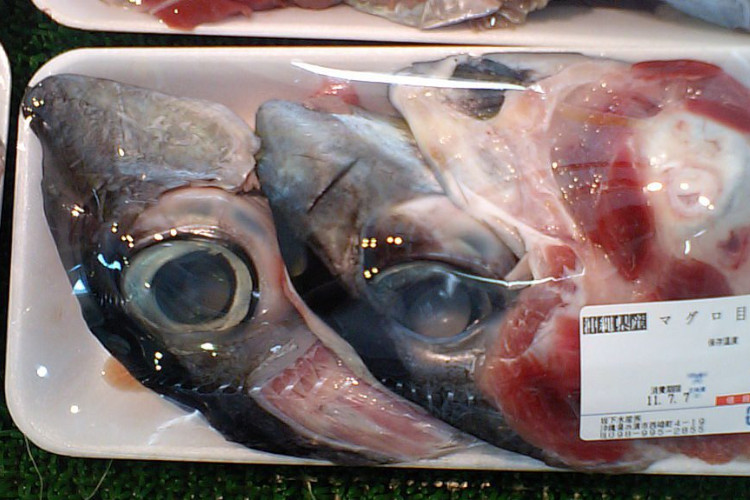
Here’s one to tickle more than just the taste buds! In Japan, instead of wasting perfectly good off-cuts when filleting a tuna, it is quite common to utilise all parts of the fish, including its eyeballs. These can be bought for cheap in many local grocery stores and markets; they can also be ordered in many izakaya (informal bars with drinks and light meals), which commonly serve them as light appetizers or as bar snacks.
Normally only the interior of the eye – the lens, the iris and the gelatinous fluid inside – are eaten, and it apparently tastes a lot like squid or hard-boiled egg. Tuna eyeballs are often fried with typical Japanese flavours such as soy sauce and ginger, but there are hundreds of recipes online if you ever decide to cook them yourself.
5. Guinea Pig – Peru, parts of Ecuador and Bolivia
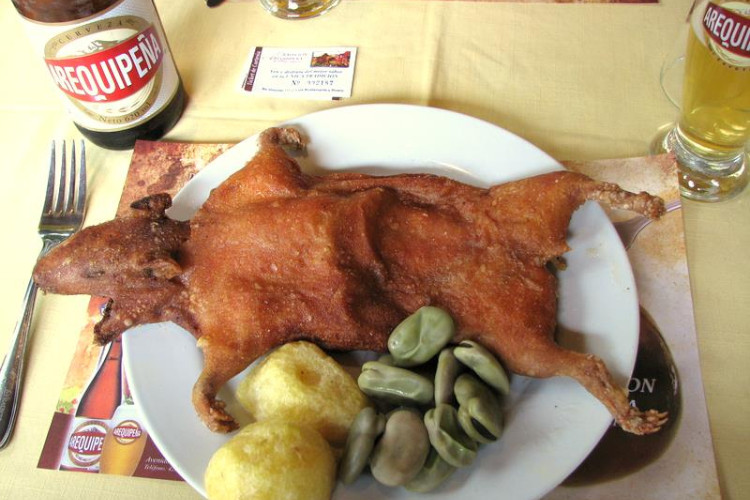
To most of us, guinea pigs are adorable, fluffy little pets. In the Andes, however, they are known as cuy, and are (mostly) raised not as pets, but rather to be eaten.
While this may at first seem unsettling to foreigners, this was actually the main purpose guinea pigs were domesticated and bred by the indigenous people of this region, from which they originate. It can be prepared in a number of ways, but is arguably best served roasted or fried. It’s basically the South American equivalent of eating rabbit, and reportedly has quite a similar taste. Not too bad at all!
6. Century Eggs – China
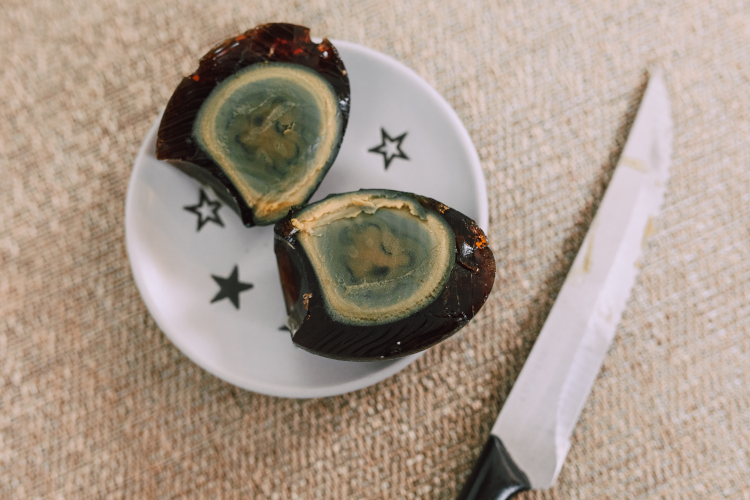
Sometimes also known as hundred-year eggs or even millennium eggs, these are literally duck, chicken or quail eggs that have been preserved – traditionally by encasing them in clay, ash, quicklime, salt and rice husks. During the preservation period (not actually a century but rather just several months), chemical processes turn the yolk a dark grayish-green, while the white turns into a dark, brown jelly.
While these eggs may smell strongly of sulfur and ammonia, they are apparently quite smooth and creamy with a salty taste. Century eggs are often served as appetizers at events, on its own or dressed up. They can also be added as a protein to other traditional dishes like congee or rice porridge.
Would you try it?
7. Huitlacoche – Mexico
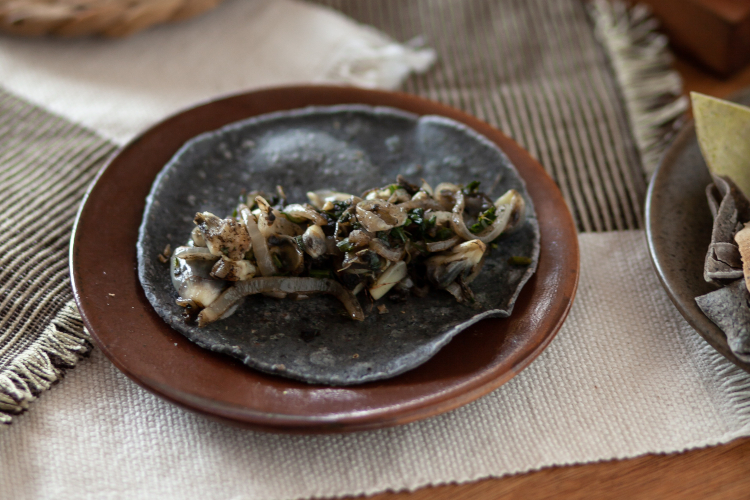
Also known as ‘corn smut’ or ‘Mexican truffles’, huitlacoche (pronounced wee-tla-KOH-che) is actually a fungus that infects maize plants, causing kernels on the cob to swell up and turn into almost pebble-sized galls in a blueish-grey tint.
It was the Aztecs that first decided to utilise these fungus-ridden kernels in their cuisine, and boy did it pay off! With an earthy, woody, mushroom-like taste, it is a popular and surprisingly nutritious filling in staples such as tacos and quesadillas. It can even be used as an ingredient in omelettes and sausages, also pairing exceptionally well with cheese.
Huitlacoche has therefore become somewhat of a delicacy in Mexico, where it can be bought at vendors or markets and is often incorporated into foods in restaurants. It is also an important ingredient in indigenous cultures of the Southwest, especially the Hopi and Zuni nations. Definitely worth a try!
8. Surströmming – Sweden
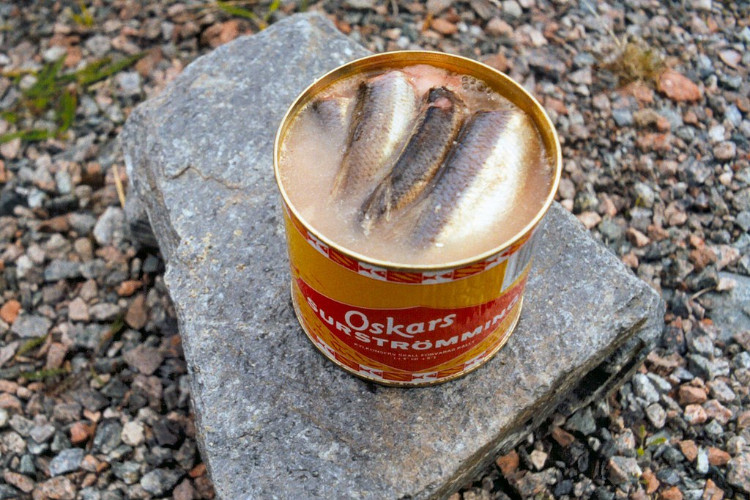
Surströmming is a canned food so pungent that it has spawned global YouTube challenges; so putrid that it was even the subject of a court case in Germany in which a landlord – in whose favour the court ruled – evicted a tenant for simply spreading its brine in the hallway. So what is surströmming? Why, it is canned, fermented Baltic Sea herring, of course!
Despite surströmming having gained international notoriety as one of the world’s smelliest foods, it is actually an extremely popular dish in Sweden, where more than 2 million people reportedly enjoy it annually. Traditionally it is served with a sort of flatbread, called tunnbröd, along with boiled potatoes and salad. It is also reportedly common to pair it with a glass of cold milk.
Want to try it for yourself but can’t afford to travel to Sweden soon? You’re in luck! Surströmming is actually shipped internationally, often accompanied by other Swedish treats. Experts recommend opening the tin outside, far from any ill-ventilated indoor spaces, before removing the guts and spine which are not meant to be eaten. It is also quite normal for the tin to be swollen due to fermentation, so it’s not a bad idea to open it in a bucket of water to avoid any brine from squirting onto your clothes under all the pressure…
9. Tarantula – Cambodia
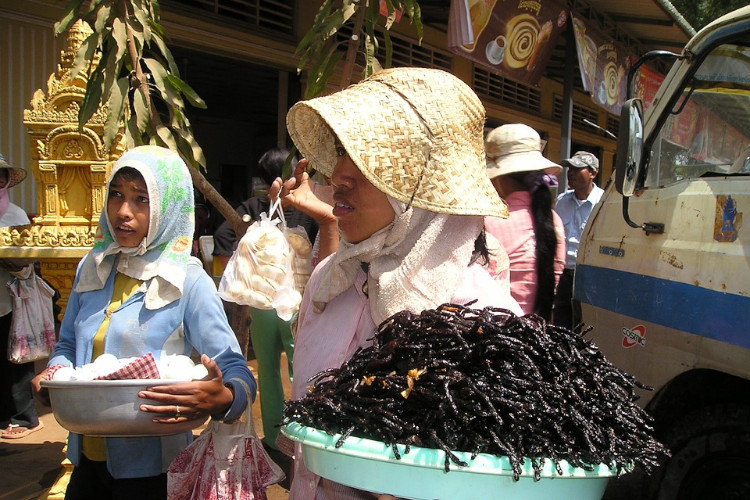
To most of us, spiders – especially big, hairy spiders like tarantulas – are the creepy, eight-legged, spine-chilling stuff that nightmares are made of. In many parts of Cambodia, however, they are sold as a popular street food!
These crawly critters have actually been consumed and used in traditional medicine in this region for generations, but under the terrible Khmer Rouge regime of the 70s, it became a more widespread, much-needed source of protein for a significant portion of the population. Today, they are commonly sold by street vendors in many parts of the country; especially in the small town of Skuon, which has been dubbed “Spiderville” by adventurous tourists who travel this far out to sample the strange delicacy.
Rolled in salt and spices (fangs removed, of course) and then deep fried; they apparently taste a bit like chicken or crab, with a crunchy head and legs. The abdomen is supposedly very rubbery, and most sources suggest not eating it since it could be filled with eggs, intestines and excrement. Would you try it?
10. Balut – Philippines and parts of China
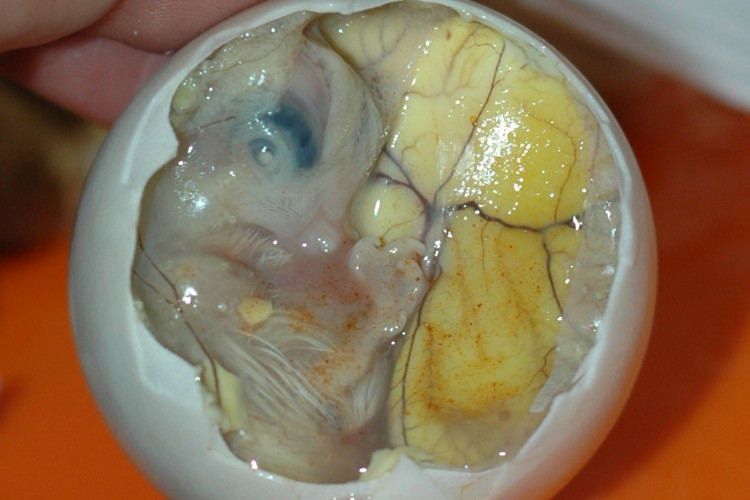
A balut is basically a fertilized and developing duck embryo that is left to incubate for 14 to 21 days (depending on preference and region), after which the half-developed chick and surrounding contents are eaten. They can be prepared in a wide variety of ways and with a wide range of flavor profiles, but are often eaten with a pinch of salt and pepper with a dash of lime, ginger or hot sauce. Some prefer to boil them, sip the broth surrounding the embryo from the shell, and then eat the rest of the contents – bones, beak and all.
Balut is considered a delicacy in parts of Southern China and Southeast Asia, but is particularly popular in the Philippines, where it is reportedly increasingly gaining acclaim as haute Filipino cuisine. It is also readily available in many other nations with significant Filipino immigrant populations.
Needless to say, balut is prohibited in Judaism and Islam, as well as some Christian denominations, as it is seen as unclean and/or forbidden due to the fact that it still contains the embryo’s blood. There is also some debate as to whether these eggs are ethically acceptable to prepare or not, though evidence leans towards acceptability if the egg has not been incubated for more than 18 days. Then there is also the question of getting serious food poisoning from Salmonella enteritidis.
Whatever the case may be, if you wish you try one of these, make sure to get it from a reputable source and don’t forget to let us know in the comments how it tasted!
11. Head Cheese – Worldwide
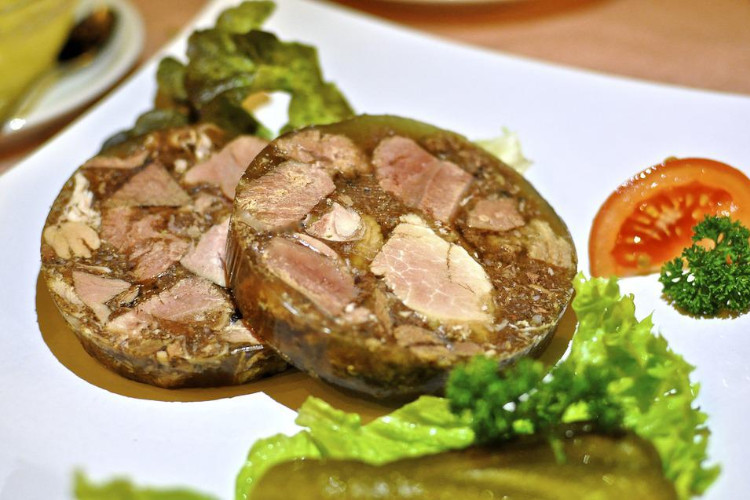
Probably not the worst food on our list; head cheese, also known as brawn, is a meat jelly eaten in the form of cold cuts. Despite its name, it contains no cheese. Rather, it is most often made by boiling parts of the flesh from the head of a calf, pig or sometimes sheep until it creates a naturally gelatinous stock that congeals when the dish has cooled.
Varieties of head cheese can be found in almost all of Europe and most of the world for that matter, with slight variations in type of meat and ingredients used to flavor the broth. Some of the more adventurous varieties include meat from the ears, feet and other parts of the animal, or even include meat from wild game. One of the most famous venison variations of this can be found in Canada’s northern regions, in the form of pickled moose nose – yum!
12. Shiokara – Japan
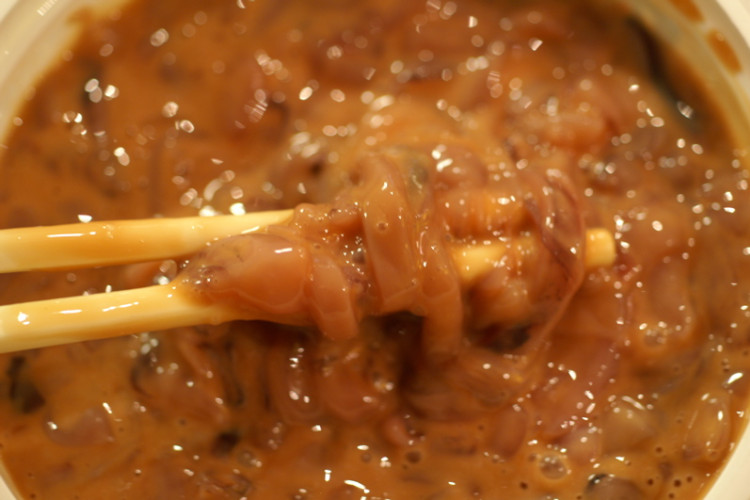
Shiokara, which translates to “salty-spicy” from Japanese, is counted among local cuisines known as chinmi – a term that literally means “rare tastes”, but basically implies that the dish is a once-popular-but-not-so-much-anymore delicacy for those with an acquired taste. So what is shiokara?
To quote Wikipedia, shiokara can be “made from various marine animals [and] consists of small pieces of meat in a brown viscous paste of the animal’s heavily salted, fermented viscera.” So basically, you select either squid (most popular), tuna, oysters, sea urchins or a handful of other sea creatures; chop them up and throw it in a mixture of their guts, a lot of salt and malted rice; and put it in a container to ferment for up to a month.
Apart from “acquired”, the taste has also been described as similar to cured anchovies, though vastly different in texture and viscosity.
14. Chicken feet – Various countries
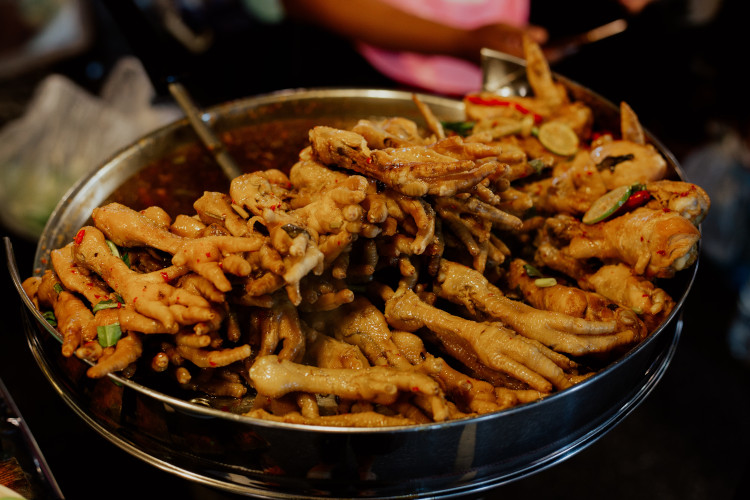
Situated somewhere between the type of chicken we’re used to and tripe or offal, chicken feet are actually fairly popular around the globe. Eaten in parts of China, South Korea, Southeast Asia and Eastern Europe; as well as in Mexico, parts of the Caribbean and South Africa – chicken feet are prepared in a variety of ways and often paired with typical local flavors.
Most methods of preparation involve removing the outer layer of skin that can be very hard. The soft inner tissue and tendons are then commonly consumed and has a unique, gelatinous texture. Depending on flavor profile, they can actually be quite tasty and are definitely worth a try.
15. Tavuk Göğsü Dessert – Turkey
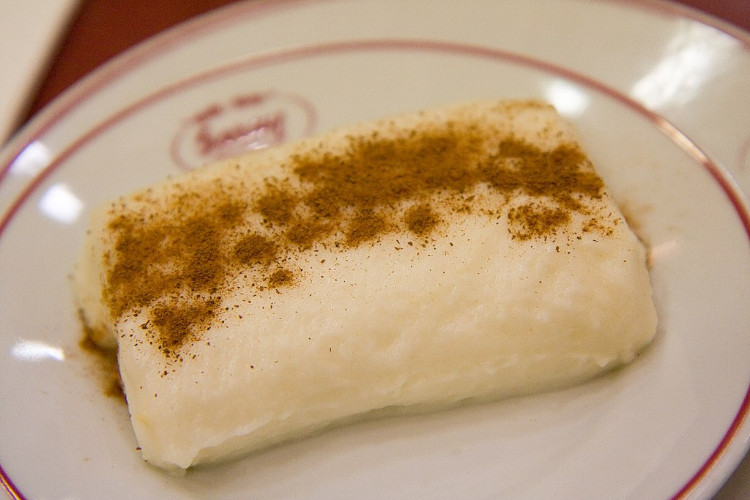
Is it a milky dessert? Is it a chicken breast? It’s… both.
Comprised of shredded chicken breast, milk, sugar and rice flour; Tavuk Göğsü (literally Turkish for “chicken breast”) is a very popular Turkish milk pudding that was even enjoyed by sultans back in the Ottoman era. It is often shaped for aesthetic presentation and topped with spices like cinnamon to add additional depth of flavor.
Ever had meat for dessert? Now you can.
16. Airag/Kumis – Mongolia and Central Asia
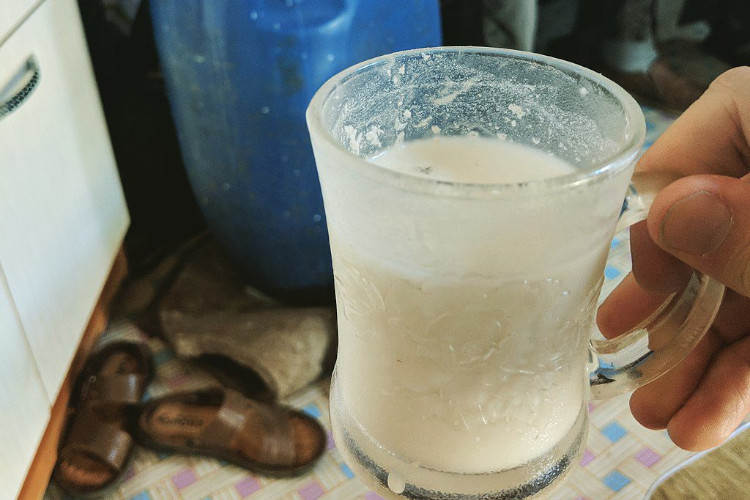
An important drink in cultures from the Central Asian steppes, airag – more commonly known by its Turkic name, kumis – is a slightly alcoholic dairy beverage made from fermented mare or donkey milk. While flavor profiles could vary depending on region of production, kumis reportedly tastes a bit lighter than dairy drinks made from cows milk, with a slightly sour bouquet and gentle alcoholic notes.
Because of the difficulty involved in milking a mare, and the subsequent scarcity of pure mare or donkey milk, mass-produced versions often use fortified cow’s milk instead as it is more readily available. If you get the chance to taste the real thing, though, we’d recommend definitely going for it!
17. Roadkill – United States, United Kingdom and a few Commonwealth countries

Think of roadkill and the last thing that comes to mind is probably how delicious it would taste in a stew. In reality, though, the consumption of roadkill is surprisingly more widespread than one would think and actually has some solid arguments from avid proponents in support of their curious culinary culture.
From opossums, squirrels and raccoons to deer, bears, moose and even foxes; many of the poor animals that fall victim to vehicular collisions are also fairly popular game meat in some subcultures in the USA and Canada. In the UK, badgers, hedgehogs, otters, rabbits and pheasants can be used in various casseroles; while kangaroos and wombats often find their way into dishes in Australia.
Naturally, “wild” meats pose a greater risk of parasites and bacteria, and could therefore lead to serious health issues if eaten without proper preparation. That is why fans of roadkill consumption recommend only cooking fresh carcasses, and thoroughly cooking them at that. That is also why some local laws prohibit the practice, though at least 30 U.S. states allow it.
Wondering why anyone would ever even consider eating roadkill? For starters, it’s a free source of meat – in many instances meat that would have been hunted for any way, or meat that can be (and in some states are) safely given to the needy for sustenance. Secondly, wild meat is free from hormones and routine antibiotics found in most store-bought meat from commercial ranches. By extension then, it is also a more sustainable alternative.
If you ever want to try roadkill, we’d suggest starting at a roadkill café (yes, these are real and can be found on many popular road trip routes, especially in the United States and Australia) or get yourself a roadkill cookbook for some inspiration.
Have you ever tried one of these dishes? Know of any other strange foodstuffs we missed that should be added to this list? Let us know in the comments below.

Leave a Reply